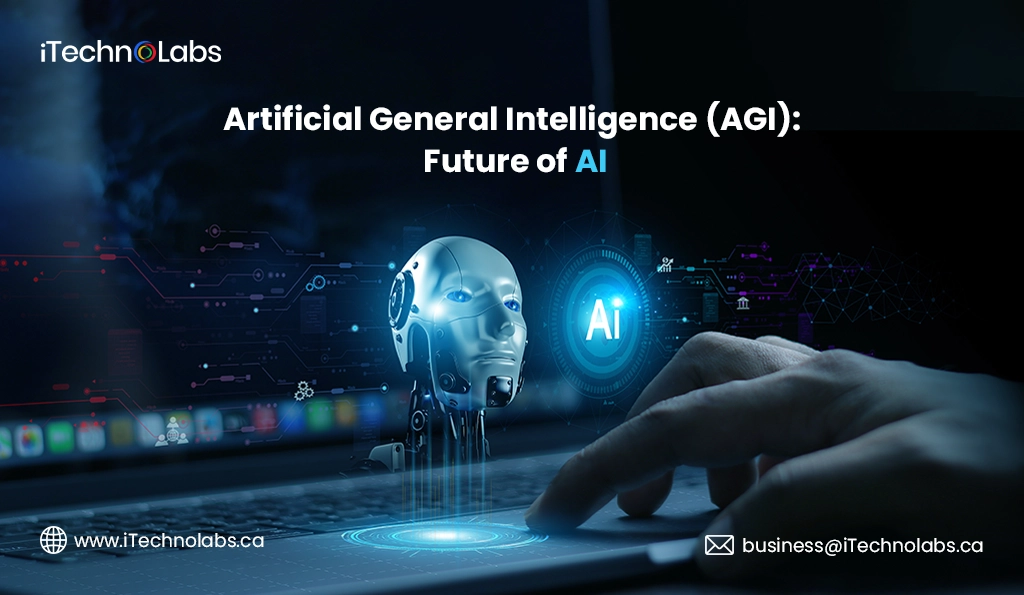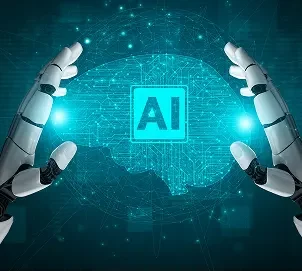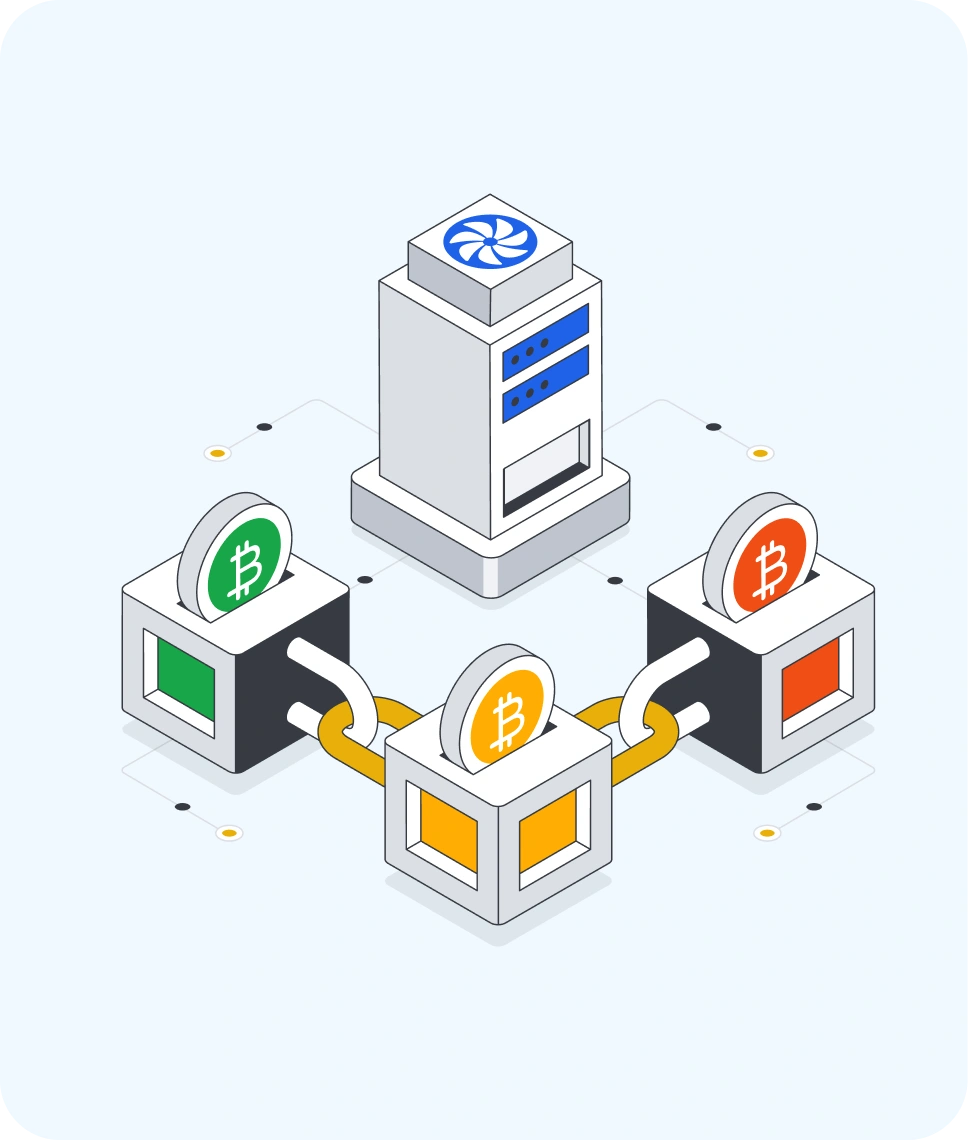Artificial General Intelligence (AGI) is a branch of study in which machines or software programs are made as intelligent as possible to carry out any human intellectual task. In simple words, an AGI would learn all types of information, reason logically, plan, think critically, and solve complex problems without any human assistance-perhaps communicate with other beings easily, as well as adapt itself to new environments and conditions.
This type of research aims to capture all facets of human mental capabilities (e.g., emotional intelligence, creative intelligence, etc.). It involves working on various human brain processes and applying that knowledge to develop computational models of those processes. Much of this work can be categorized into several subcategories, and that work is within the boundaries of interdisciplinary work (e.g., natural language processing, computer vision, robotics, neural networks, etc.).
The ultimate goal is to equip machines with the ability to act autonomously in many different environments with the decisions and actions of humans. Such innovations promise to change entire industries from health care and education to transportation and entertainment. This is a big dream and issues of significant ethics and societal change will come with it. This is why it is crucial that AGI systems are developed with full attention to the fact that they need to be developed with responsibilities, safeguards, limitations, and controls to prevent unwanted consequences.
What is Artificial General Intelligence?
Artificial General Intelligence (AGI) is an area of artificial intelligence that focuses on building machines or software programs that will have a total level of human-facing cognition. AGI is different from narrow AI, which is developed to perform a limited number of human activities, such as language translation or image recognition. AGI seeks to reproduce everything that humans can do in terms of their intelligence and abilities. In this case, everything means even human language capabilities to reason, learn from experience, and adapt to new situations.
Ultimately, AGI has the long-term goal of being able to conduct any intellectual function that can be performed by humans. Such lofty aims promise the ability to remake many sectors of the economy, ranging from health care, for which AGI may aid in diagnosing obscure illnesses and individualized treatment schemes, to schooling, where it may provide dynamically adjustable education for the singular person.
In addition to impacting industries, AGI also creates potential shifts to the socio-economic context with its possible abilities to address some of the world’s largest challenges. For example, AGI could augment climate change and pollution efforts through advanced data analyses and modelling, or it could enhance global poverty by enabling coordinated economic coordination to optimize and direct fund investments.
Although AGI is presently in its beginning stages of development, it has the potential to unlock unprecedented technological and knowledge breakthroughs. Scientists and technologists are working day and night to make a breakthrough over the many scientific, ethical, and technical issues that need to be addressed. As development progresses, the potential gains of AGI make it one of the most promising and revolutionary areas of research in the contemporary era.
Function of Artificial General Intelligence (AGI)
Artificial General Intelligence (AGI) is designed to perform any intellectual work that a human can do – a discipline, reference and environment. Unlike Small AI, which is limited to specific features such as image recognition or language translation, AGI acts as a completely autonomous system capable of logic, learning and adaptation like a human.
The core functions of AGI include
- Autonomous Learning: AGI can learn from experience without using knowledge from one domain to solve problems in another.
- Logical Reasoning: It can analyze information, find patterns, and make choices, even in unknowable situations.
- Natural Communication: The AGI system can understand human language in context and allow for more meaningful conversations and emotional intelligence.
- Adaptability: AGI can work in a dynamic environment and change strategies and real-time strategies, just like us.
- Problem-Solving: From the diagnosis of medical conditions to handling logistics, Agi can apply cognitive processes to various challenges.
Current State of AGI and Predictions for the Future
Artificial General Intelligence (AGI) is one of the most important challenges in AI research. While Small AI has made huge advances in areas such as machine learning, natural language processing and image recognition, Agi-Ai, which has not yet been achieved before.
At the moment, we are still in the early stages of AGI development, with most expertise in AI system-specific domains. Despite the progress of nerve networks and cognitive data processing, no system has reached the level of human-like normal intelligence. Large technical companies and research organizations are focused on different approaches to AGI, including nerve delegation systems, reinforcement learning and intensive teaching architecture.
Expert Predictions on AGI Arrival
- Median Estimate: Experts estimate that AGI will appear by 2060.
- Most Likely Timeframe: AGI is expected to appear between 2040 and 2050 with 75% probability.
- Long-Term Outlook: There is a 90% chance AGI will appear by 2075.
- Geographical Differences:
- Asian Experts: Anticipate AGI within 30 years.
- North American Experts: Expect AGI in 74 years.
Rapid Advancement: Once AGI is achieved, most experts believe it will progress to superintelligence relatively quickly, with a timeframe ranging from 2 to 30 years.
Transition to Superintelligence
When AGI is there, many models mean that the superintendent will follow quickly. The period between AGI and AI means being “superintendent”, which means the point where AI crosses human intelligence is considered small. Many people believe that it can be as low as 2 years of achieving Agi, while others estimate that it can be up to 30 years, which can be based on technology trends.
The emergence of superintelligence may have far-reaching effects, as it could facilitate AI systems that outperform humans at any cognitive-based activity as well as self-improve and self-replicate.
Benefits of Artificial General Intelligence (AGI)
The advancements of Artificial General Intelligence (AGI) offer groundbreaking advantages across multiple industries and facets of everyday life. AGI will provide significantly greater and longer-term value than previous AI since it can think, learn and rationally reason, much like humans.
Key benefits of AGI include:
- Cross-Domain Intelligence: AGI can use knowledge across multiple domains—whether diagnosing diseases, assimilating climate data, or optimizing logistical efforts throughout the globe—AGI can serve as a powerful tool for addressing complicated problems.
- Personalized Service Alternatives: Higher quality recommendations across services, like education or healthcare, are impossible without AGI’s ability to customize value per person or direct user.
- Efficiency and Automation: AGI can perform every time-consuming task and, in turn, save human effort for more creative or strategic tasks.
- Accelerated Innovation: AGI’s immense discovery potential will be able to discover breakthroughs in whatever field—science, medicine, engineering, etc.—entirely through rapid tests on vastly greater scales than experts.
- Societal Impact: AGI has the potential to tackle real issues, such as poverty, pollution, and public health. AGI provides smart decision-making that leverages intelligent societal collaboration for a greater good.
As AGI grows, its advantages can transform economies, change industries, and advance humanity beyond where we are.
Top 10 Current Trends and Future Prospects of AGI
- Metaverse Integration
As virtual and augmented reality technologies have emerged, the idea of merging Artificial General Intelligence (AGI) with the metaverse has also emerged. Intelligent agents would be capable of interacting and relating with users through rich virtual worlds, ushering in experiences that are not only more dynamic but also more Real. For example, AGI would lend a boost to virtual training systems through the modeling of genuine life events, deliver customized virtual assistants that can learn from users, and even create virtual societies. This technology is limitless, enabling innovation and we just may experience a change in our interaction with digital worlds. Digital worlds will become more interactive and realistic than we previously imagined.
- Conversational AI Chatbots and Assistants
The biggest jump in AGI may have been the development of highly sophisticated condensed AI-chatbots and individual assistants, instead of producing some super-intelligent agents or superintelligences. These intelligent agents decode people’s communication in natural language for human speakers – sofa, not required to make it easier and friendlier to use the interface compared to the older computing cleaning interface. This agreement is designed to talk to people for help from AGI and can help you with tasks such as planning, customer service inquiries, or just being there for someone as needed. For example, a professional can be a virtual helper to help manage his schedule, remind him of future meetings and help handle the trip, which saves him both time and anxiety. Similarly, companies use chatbots to supplement or replace customer service: They can answer questions about product information, solve customers’ problems and help with returns – creating capacity that most customers prefer. Last, but not least, emotional support is currently in the stages of development, where they will be able to talk to users while they are human, behave like a friend and also help improve some aspects of mental health by reducing loneliness and anxiety.
- Quantum AI
Another rapidly growing area of research with prospects for big improvements in AGI is quantum computing. Quantum computers are quite different from classical ones: while classical computers operate with bits as a means of storing and encoding information, quantum computers use qubits as defined by multi-state existence instead. This permits them to perform intricate calculations greatly faster than an ordinary computer; for example, when a specific problem takes more than years, even centuries, for completion, it’s immediately solved within a few minutes. Thus, speed and processing power become advantages for AGI, which can then analyze massive amounts of data at record-breaking speed and also make correct forecasts and decisions. Quantum AI will also have the potential to increase conversational-assisted interfaces, such as chatbots and virtual assistants, into making conversation even more human-like and fluid. As quantum computing advances, it will keep increasing the scope of AGI in applications across the various fields.
- Rise in No-code or Low-code AI Development
Traditionally, the development of AI applications requires an arduous, lengthy and sometimes exasperating journey that has required serious subject matter expertise in fields like data science, machine learning, and programming. Recently, though, new developments in the AI ecosystem have allowed for the advent of no-code or low-code AI development tools to enable those with little to no coding skills to construct and share AI models. The use of no-code/low-code platforms to build or customize AI has simplified the process of working with a personalized AI via simple drag-and-drop interface tools, pre-built algorithms, and automated workflows, allowing non-technical people to participate in AI, thereby democratizing AI development. With simpler access to AI development, businesses and organizations can leverage their own custom AI solutions and increase adoption of AGI across industries.
- NLP Development for AGI
Natural language comprehension and processing form the core of AGI. Natural Language Processing (NLP) is a connotation that chronicles the particulars of allowing a machine to converse with humans by understanding and responding to natural language in a constructive and contextually appropriate manner. Whenever one speaks of showing extra capabilities to machines, one is primarily directing the machine towards the following: speech recognition and Synthesis, Language Generation, Sentiment Analysis, and Machine Translation– all combined towards achieving natural communication between humans and machines with the least intervention.
Progress in natural language processing (NLP) technologies will guarantee that AGI will continue to grow in its ability to communicate with and make sense of human attributes. As NLP develops, new experiences will evolve in ways involving AI systems like chatbots and virtual assistants that can process and respond to more complex human questions. An improved NLP model will make such systems behave more naturally, be contextually aware, and extend their knowledge base to include a much wider variety of topics within the conversation, thereby becoming useful and dependable in fields like customer service, healthcare, education, and entertainment.
Advanced NLP integration into AGI can broaden the scope of human-computer interaction, where machines could not only execute tasks based on commands of users but also engage in dialogue that is coherent and supportive of emotional needs and even grasps cultural subtleties. This would mark an enormous leap wherein AI would evolve in a more profound way into intelligence.
- Hyper Automation
Hyper-automation, also known as intelligent process automation or software robotics, uses many forms of automation technology, including artificial intelligence, machine learning (ML), and robotic process automation (RPA), to automate an overall process, which in the past required human intervention. Hyper-automation includes the automation of human decisions and critical thinking to solve problems, not just complete tasks.
Hyper-automation has the capability to help organizations drive productivity, accuracy, and scalability by decreasing wasted labor and reducing human errors, empowering staff to focus on valuable and creative tasks. Going forward, hyper-automation will continue to evolve, allowing for disruptive capabilities to be adopted across functions, including finance, health care, and manufacturing.
- Workforce Augmentation
Workforce augmentation involves the application of AI technologies to augment and complement human employees, not replace them. This practice recognizes that there are certain human skills and capabilities that cannot be duplicated by machines and attempts to integrate these with the capabilities of AI.
An example of workforce extension is the utilization of chatbots as customer support agents. Though efficient in responding to routine queries, complicated and emotive concerns remain best answered by a human operator. With both parties complementing each other, they can give a more integrated experience to the customer.
- Ethical Considerations
Becoming an increasing tool in industries, AI technology raises moral questions regarding its applications. These range from deprivation of jobs to biased decision-making and intrusion on privacy.
To address the concerns above, businesses should prioritize ethics and transparency with their AI system usage simply by looking carefully at the datasets in creating the algorithm, keeping responsibility for the decisions the algorithm makes, and not allowing biases or harm to individuals.
- Increased security risks
As AI technology is embedded in more and more systems and becomes increasingly sophisticated, it too presents new security risks about which caution and preparedness are warranted. For example, cybercriminals will be able to exploit weaknesses in AI algorithms to either change or disrupt systems, with risks that can have disruptive and financial impacts. Risks here could be forms of data poisoning attacks and model theft, where the integrity of the data can be compromised, or the data could be sabotaged, or business practices could be replicated, which could also include the theft of proprietary models.
To address these risks, businesses need to implement procedures about security and perform regular audits on the use of their work with AI systems. Businesses need to check not just the security of the model heard at the beginning but also the security of what data is going in. Ensuring the data is insulated from outside interference is also important, which can include encrypting data and finding other means of protecting data from unauthorized security interests. Businesses also need to use techniques such as adversarial testing at the modeling phase to identify weaknesses (real and potential) in the model. Monitoring for anomalous activity is vital, as the sooner a small problem is detected, the less likely it will grow into a larger one. Training employees on AI-related security processes and updating them on current trends in cybersecurity may only serve to increase the effectiveness of response plans to these emerging risks.
- AI-based Hiring Process
One area of adoption regarding AI processes that has seen considerable growth is hiring companies for sales potential. Companies are using AI-enhanced systems and algorithm-based models for screening resumes, interviewing candidates, and even hiring candidates. While some of these processes may save a business time and money in their hiring processes, these questions bring new questions about the possibility of bias and discrimination to the process.
AI systems can only be as unbiased as the data dependence on training data sets. Biases and inequalities in training data sets make it inevitable that biases will contaminate the output decisions of AI systems. Discriminatory practices may occur to groups of individuals, like people of color or low-income backgrounds.
The Evolution of AGI: From Concept to Reality
People have been talking about AGI, or artificial general intelligence, for decades. AGI means AI that can behave with human-like qualities and exhibit capabilities like problem-solving, creativity, and self-awareness. Even though today’s AI technology is groundbreaking and astonishing, it does not exhibit the same multifaceted abilities as humans.
Even though researchers and scientists are making incredible strides toward AGI, they are still making substantial strides in advances with deep learning and neural networks that may ultimately increase the probability that more advanced AI systems will be developed and that we can achieve generalized intelligence. They expect that AGI can occur in our lifetimes.
1950s: Foundational Neural Network Algorithms
Neural networks were first introduced in the 1950s, a class of machine learning model inspired by the human brain’s structure and function. The conceptualization of neural networks represents an important milestone in artificial intelligence and paved the way for future developments in AI technology. Neural networks have come a long way since about 1950, enabling even more complicated algorithms to be developed to accomplish complex tasks such as image and speech recognition, self-driving, and language translation. The modification and schematic depictions of neural networks have cultivated new innovations and altered existing frameworks across a range of different functions and industries.
1960s-1970s: Deliberative Reasoning Hypotheses
In this decade, scientists were researching the concept of AGI by working on logical reasoning systems. Algorithms that exemplify early contributions to AI were systems coded with rules and logic to reason through problems, logically breaking them into simpler problems. For example, using theorems in mathematics or strategy-based games, it would sequentially execute a series of logically illuminated steps. Moreover, while these instances add value to the possibilities of AI, primarily chess or simple scheduling problems, they are not sufficiently pliable or mutable for generalized intelligence. The systems performed poorly on anything unexpected or that involved intuitive knowledge, illustrating the limitations of rule-based AI to truly realize AGI.
1980s-1990s: Mathematical General Intelligence Definitions
In the 1980s and 1990s, there was an interest in mathematical definitions of intelligence, such as Douglas Lenat’s “Cyc” project, where they attempted to develop a common sense knowledge base database that would be usable by AI systems. This method was data-intensive, in the expectation that supplying adequate data would allow machines to create informed decisions. Nonetheless, this turned out to be difficult because it needed extensive data and intricate algorithms to properly process it. Though these initiatives greatly advanced in areas such as natural language processing and robotics, they were still unable to succeed at achieving full-fledged AGI.
2000s-2010s: Engineering Specialized AI Capabilities
In the 2000s, as big data and machine learning took off, researchers were no longer interested in developing general AIs. They started building specialized AIs that could do one thing very well on a specific input. To do so, the researchers taught AIs with a much more extensive dataset that contained millions of examples, thus allowing the AI to discover patterns to make choices on its own without needing to have the AI explicitly written to do so or the framework of rules in which to follow. Major advances were made in areas such as image recognition, where AI systems could determine the objects and faces in images; speech recognition, allowing for the AI to convert vocal commands into actions for voice-activated assistants; and natural language processing, which allowed computers to summarize and produce human language much better than previously.
These abilities were astounding but certainly not without their limitations. They were entirely dependent on the quality and quantity of training data. Performance in new and unexpected scenarios would fall quickly. In addition, these systems did not have a mechanism to generalize knowledge other than from their particular training data, so they could not apply learned principles in other situations. This pointed towards a recurring problem in the AI community: creating systems that are not just highly competent in specific niches but also share the ability to adapt and generalize of human intelligence.
2020s: Large Language Models and Ethical Concerns
The 2020s represented a leap forward in AI and showcased large language models such as GPT-3 (Generative Pre-trained Transformer), which have billions of parameters and can generate human-like text reasonably well and coherently. This was not just one model either; more than one of these models was released with not only human text but also produced human-like thinking. These models were trained on vast amounts of text from books in all categories, articles, and data from various websites. These models learned in a way that captured or carried “knowledge” in a generally epistemological way that resulted in human-like text output based on the correspondence with the input.
Although these advancements have demonstrated great potential in natural language processing tasks, they have also raised serious ethical issues surrounding advanced, influential technology. Large language models have faced criticism over inheriting and preserving biases that appear in the datasets used for their training and over the ability of such systems to be exploited as tools for distributing misinformation and influencing public sentiment. This has set debates into action regarding how these AI technologies are responsibly developed and ethically used.
Ongoing: Pathways on Broad Capabilities
With AI improving and being used more in everyday life, the best method to develop broad capabilities in such systems continues to be debated. There are some who feel that we need to be working towards the creation of highly specialized AI with narrow but great abilities, whereas others propose working on more universal models of cognition aimed at modeling human intelligence.
One of the possible avenues is through cognitive architectures, which seek to design general-purpose intelligent agents that can reason, learn, and adapt to novel situations. Another avenue is through the integration of artificial neural networks and symbolic reasoning, which attempts to integrate both statistical learning models and logical rules to achieve more robust and flexible systems.
Also, read: What is the AR Zone App? A Brief Guide 2025
What are the types of AGI?
AGI, or artificial general intelligence, alludes to AI systems capable of understanding and solving various tasks similar to human intelligence. Many different approaches and kinds of AGI are being pursued by researchers and developers.
- Symbolic AI
Symbolic AI, or classical or rule-based AI, is based on the idea of using logical rules and symbols to represent knowledge and solve problems. Such systems are typically programmed by humans using a fixed set of rules and logic that direct them on how to respond to different inputs. This method is highly dependent on human knowledge to specify the rules and needs heavy knowledge engineering to address a broad spectrum of situations. Symbolic AI can be extremely effective in highly structured domains with well-defined rules but tends to fail with ambiguity and the complexity of real-world situations where rules cannot be easily specified or change over time.
- Hybrid AI
As the name indicates, hybrid AI takes a combination of approaches to create more flexible and stronger AGI systems. Typically connects symbolic AI with other techniques like machine learning or neural networks. Hybrid AGI systems use a combination of rule-based reasoning and statistical learning, improving their versatility as they can report both adequately defined tasks as well as poorly defined instances.
- Emergentist AI
Emergentist AI (or AGI based on connectionism and neural networks) is based on the philosophy of modeling intelligence based on people’s brains. The emergentist systems are made up of a stack of interconnected nodes (like neurons) that process information and learn from data while utilizing hidden layers (a statistical method) to produce their views. Emergentist AI allows for machine learning through experience while being adaptable to new experiences. This system functions through experience rather than hard-coded methodologies (symbolic AI). Many emergent AQ systems often have significant issues with explicability and cannot articulate their criteria for decision-making.
- Universalist AI
Universalist AI is the research into developing properly general or universal AGI systems that can execute any intellectual activity that a human can. It draws inspiration from the Turing test, which examines a machine’s capacity to simulate intelligent behavior identical to that of a human. Although this kind of AGI remains largely hypothetical, it promises much for handling complex and heterogeneous tasks.
- Whole Organism Architecture
The entire organism architecture is a relatively recent method of designing AGI systems based on the structure and operation of living organisms. This is designing AGIs as having a central control system that acts upon the various specialized parts or modules, just like the brain acts on various organs in the human body. The aim of this architecture is to design more independent and flexible AGI systems.
What is the Difference Between Artificial Intelligence and Artificial General Intelligence?
Artificial intelligence (AI) is a broad term describing any computer or machine system that is capable of performing tasks that ordinarily require human intelligence, to include learning, reasoning, and decision-making. AI includes many different approaches and techniques, including machine learning, natural language processing, and computer vision.
Artificial general intelligence (AGI) is defined as an AI system that can carry out any intellectual task that a human can carry out. This requires that AGI can understand and learn from varying types of information, adjust to new situations and challenges or environments without being explicitly programmed, and apply creativity and commonsense.
More simply put, AI targets fixing particular issues or executing particular activities, whereas AGI is intended to mimic the wide and flexible abilities of human intelligence. Although AI systems are now established across numerous sectors, AGI is a relatively theoretical entity as there continue to be research and development endeavors. In the end, the objective of pursuing AGI is about building genuinely independent and adaptive machines to help humans address advanced problems and improve society in some way.
Five Major Challenges of AGI Development
AGI development is a multifaceted and complex process, and some of the most important challenges have to be met in order to accomplish this. Some of the major challenges are
- Complexity and Diversity of Human Intelligence
The biggest challenge of AGI (Artificial General Intelligence) development is to replicate the complexity and diversity of human intelligence. In contrast to specialized AI, which does one particular thing very well, AGI tries to do anything that a human can. Human cognition is not a monolithic whole but an amalgamation of several faculties, including reasoning, creativity, remembering, and feeling. All these competencies play off each other in highly complex manners to yield what we call intelligent behavior. Developing an AI system that can replicate all these abilities in a coherent and consistent way is no easy task. It needs not just sophisticated algorithms and tremendous computational resources but also a profound insight into the human mind. Researchers need to overcome challenges of developing emotional intelligence, contextual awareness, and the capacity to transfer learning from one domain to another. Reaching AGI requires many technical and philosophical challenges to overcome, so it is one of the most visionary and complicated pursuits in the subject of artificial intelligence.
- Ethical Considerations
With advancing AI technology, ethical issues too take on greater importance. With AGI, concern is being expressed about its potential impact on society and all of humanity. Some experts believe that the creation of an AGI may lead to unintended consequences or even threaten the very existence of humankind if not managed properly. This resulted in discussion and contemplation on the inclusion of safety measures and regulation for highly structured growth and utilization of AGI technology. There are questions still surrounding ethical issues about granting human-like rights or personhood status to intelligent devices.
- Technological Limitations
There have been tremendous advancements in AI research and development, but there remain numerous technological limitations that must be tackled prior to attaining AGI. A key problem is designing a system that can learn and respond to new circumstances without being programmed to do so. The other difficulty is the development of strong and effective algorithms for processing large quantities of varied data. There are worries about the reliability and security of AGI systems, whose choices would have real-world implications.
- Uncertainty and Philosophical Questions
The search for AGI (Artificial General Intelligence) raises extremely profound philosophical questions about intelligence and consciousness. Many experts believe that the creation of a fundamentally intelligent machine is a necessity of deep understanding of these most basic aspects of human thought, and this still eludes us. The essence of human mental processes, feelings, and subjective experience is not yet fully understood. Others question whether it is possible to engineer an artificial creature with true consciousness or machines becoming self-aware at all. This raises other ethical concerns about the rights and treatment of potentially conscious machines, not to mention the social ramifications of AGI becoming smarter than a person. The debate continues with the evolution of AI technology, but the ultimate answers to these philosophical questions are far from established.
- Learning and Adaptation
One of the characteristics of true intelligence is learning and adapting to new situations. While current AI systems are excellent at performing specific tasks, they are lousy at applying what they’ve learned in general to new situations. This is a fundamental challenge when it comes to the creation of AGI since machines must constantly learn from their actions and apply the lessons in new and different ways. Different methods have been devised by researchers, either through reinforcement learning, where machines learn by trial and error, or transfer learning, where machines apply previously learned specifics to different problems. However, replicating the ability to learn in the manner of a human being is an ambitious step in the achievement of AGI.
Suggested Article: Top 10 Cardano NFT Marketplaces
Opportunities in AGI Development
Despite the challenges and uncertainties surrounding Artificial General Intelligence (AGI), its potential benefits are driving significant research and development efforts across the globe. The creation of a machine with human-like intelligence could revolutionize many industries, from healthcare and transportation to finance and entertainment. For instance, in healthcare, AGI could lead to better diagnostic tools, personalized treatment plans, and advancements in medical research. In transportation, it could facilitate the development of highly efficient autonomous vehicles, reducing accidents and traffic congestion.
Moreover, AGI could also lead to breakthroughs in various scientific fields by analyzing vast amounts of data and making connections that humans may miss, thus accelerating discoveries in areas such as climate science, genomics, and space exploration. Additionally, AGI has the potential to free humanity from mundane and repetitive tasks, allowing us to focus on more creative and fulfilling pursuits. This shift could lead to a renaissance of innovation and creativity, as people have more time and mental energy to engage in artistic, intellectual, and entrepreneurial activities.
While the path to achieving AGI is fraught with technical, ethical, and societal challenges, the transformative impact it promises makes it a highly compelling area of study and investment.
Bridging the Gap Between Artificial and Human Intelligence
One of the main goals of AGI development is to bridge the gap between artificial and human intelligence. Machines excel at processing large amounts of data, but they lack the intuition, creativity, and adaptability that humans possess. On the other hand, humans have limited processing power compared to machines, but we have advanced cognitive abilities such as empathy, reasoning, and self-awareness.
Impact of AGI on Various Industries and Sectors
The potential impact of AGI reaches far beyond the fields of medicine, transportation, and science. It has the potential to revolutionize industries such as finance, education, manufacturing, agriculture, and more.
- Healthcare
In the healthcare industry, AGI could assist in diagnosing diseases and identifying effective treatments by analyzing genetic data, medical records, and research findings. By leveraging vast amounts of data, AGI systems can uncover patterns and correlations that might be missed by human doctors. This could lead to personalized and more accurate medical care for patients, improving outcomes and potentially reducing the costs associated with misdiagnoses and ineffective treatments. Additionally, AGI’s ability to stay updated with the latest medical research ensures that patients receive the most current and effective care available.
- Retail
AGI has the potential to revolutionize the retail industry by enhancing consumer experience, improving supply chain management, and optimizing inventory management. By analyzing customer data and behavior patterns, AGI systems can create personalized shopping experiences tailored to each individual’s preferences. This can lead to increased customer satisfaction and loyalty. In addition, with advanced predictive capabilities, AGI can help retailers optimize their supply chain operations by forecasting demand and adjusting inventories accordingly.
- Finance
The finance industry is another sector that could greatly benefit from the introduction of AGI. AGI systems can analyze vast amounts of financial data and market trends to make more accurate predictions and assist in making investment decisions. This could potentially reduce human errors and improve returns for investors. Moreover, with the integration of natural language processing capabilities, AGI systems can also provide personalized financial advice and support to customers.
- Manufacturing
AGI has the potential to transform manufacturing processes by making them more efficient, precise, and adaptive. With AGI’s ability to analyze data from sensors and machines in real time, manufacturers can optimize production schedules, predict equipment failures, and improve overall efficiency. Additionally, AGI-powered robots can perform complex tasks with precision and speed, reducing human errors and increasing productivity.
- Education
AGI can also revolutionize the education industry by providing personalized learning experiences for students. By analyzing students’ performance data and learning styles, AGI systems can create customized learning plans tailored to each individual’s needs. This could lead to improved student outcomes and a more engaging and efficient learning environment.
- Transportation
The transportation industry could also see significant advancements with the integration of AGI. Self-driving cars powered by AGI could potentially reduce accidents and improve traffic flow, leading to safer and more efficient transportation systems. Furthermore, AGI can assist in optimizing route planning for logistics companies, reducing delivery times and costs.
The Role of AGI in Shaping the Future of Humanity
AGI has the potential to greatly impact and shape the future of humanity. With its advanced capabilities, AGI can improve various industries, enhance productivity, and potentially lead to groundbreaking discoveries. However, it is crucial to consider the ethical implications of this technology and ensure responsible development and usage.
One major concern with AGI is the potential displacement of human workers as tasks become automated. This raises questions about job security and income inequality in a society where machines are capable of performing complex tasks better than humans. Policymakers and businesses need to address these issues proactively and create solutions for a smooth transition as automation becomes more prevalent.
Another ethical concern is the potential for AGI to be used for malicious purposes. It is essential to establish regulations and safeguards to prevent the misuse of this technology. Additionally, there should be ongoing discussions and debates on the ethics of creating machines with human-like intelligence and whether they could potentially possess consciousness or emotions.
Conclusion:
In conclusion, the AGI (Artificial General Intelligence) revolution represents a significant leap in the evolution of artificial intelligence, with the potential to transform industries and daily life. As AGI systems advance, the focus increasingly shifts toward efficient data handling, the development of adaptive algorithms, and the continuous enhancement of model capabilities. Equally important is the emphasis on ethical considerations, ensuring that these powerful technologies are designed and implemented in ways that are responsible, transparent, and beneficial to society. By prioritizing safety, fairness, and accountability, stakeholders in the AGI space can help mitigate risks while maximizing the positive impact of AI innovations. The journey toward AGI is both challenging and promising, requiring collaboration across disciplines to navigate its technical complexities and societal implications thoughtfully.
Also, read: Top 10 Cardano NFT Marketplaces
FAQs
1. Is AGI better than AI?
AGI (Artificial General Intelligence) isn’t necessarily “better” than AI but aims to be more versatile. While traditional AI excels at specific tasks, AGI strives to mimic the full range of human intelligence—reasoning, learning, and adapting to new environments. AGI’s potential is broader, but it’s still under development and raises complex ethical and technical challenges.
2. Is ChatGPT AGI or AI?
ChatGPT is an advanced form of narrow AI, not AGI. It can understand and generate human-like language but lacks true general intelligence. Unlike AGI, it cannot independently reason, plan across domains, or adapt fluidly to new, unknown environments without task-specific programming or training.
3. Is AGI the same as generative AI?
No, AGI and generative AI are not the same. Generative AI, like language or image generation models, focuses on creating content based on patterns in data. AGI, on the other hand, aspires to replicate the entirety of human cognitive abilities and operate autonomously across any intellectual task or domain.
4. Does AGI exist yet?
AGI does not currently exist. While AI systems have made huge leaps in specialized tasks, AGI remains a theoretical goal. Researchers are actively exploring cognitive models and neural architectures that might enable AGI, but significant technical, ethical, and philosophical challenges remain unsolved.
5. What is AGI as in AI?
AGI (Artificial General Intelligence) is a form of AI designed to replicate human intelligence in its full scope. Unlike narrow AI, which focuses on specific tasks, AGI aims to reason, learn, and adapt across multiple domains independently—just as a human would—making it one of the most ambitious frontiers in AI research.
6. What is the crucial difference between AI and AGI?
The key difference lies in scope and adaptability. Traditional AI performs narrowly defined tasks like translation or image recognition. AGI seeks to handle any intellectual task a human can, using general reasoning, creativity, and emotional intelligence. AGI is adaptive, flexible, and theoretically autonomous across environments and challenges.










